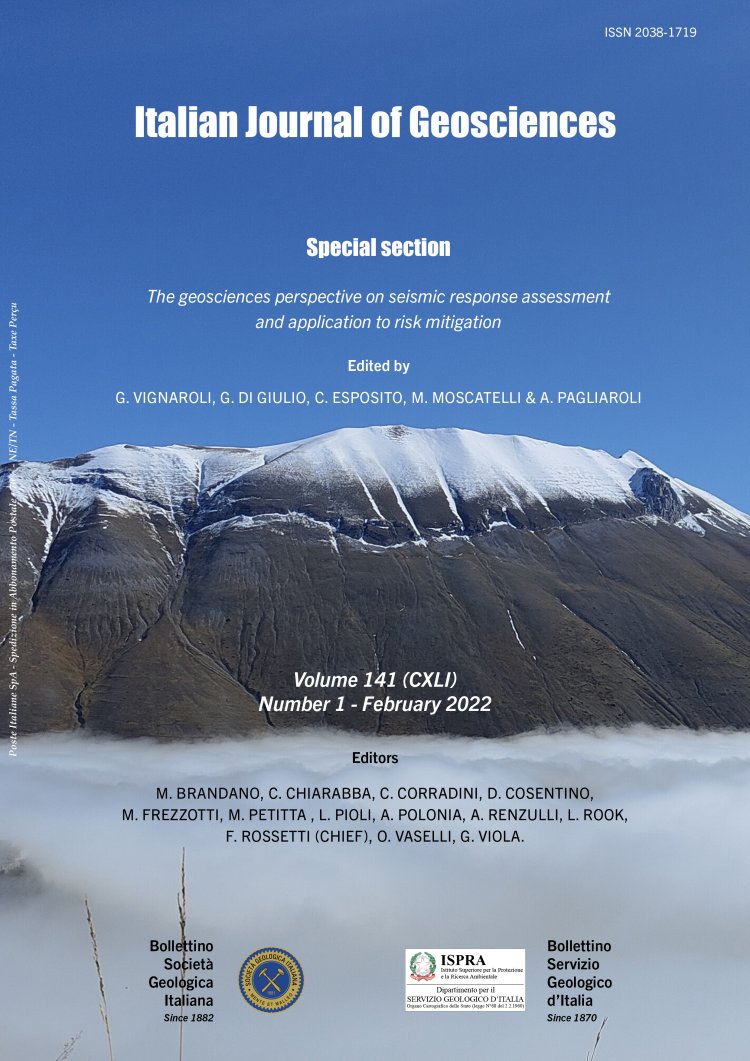
Earthquake weak motions and noise measurements unravel significant site amplification effects in the Val d'Agri basin (southern Italy)
Gaetano Riccio1, Stefania Pucillo1, Antonio Fodarella1, Rocco Cogliano1 & Luigi Improta2
1Istituto Nazionale di Geofisica e Vulcanologia, Sismologia e Tettonofisica, Contrada Ciavolone, Grottaminarda (Italy).
2Istituto Nazionale di Geofisica e Vulcanologia, Osservatorio Nazionale Terremoti, Via di Vigna Murata 605, Roma (Italy).
Corresponding author e-mail: stefania.pucillo@ingv.it
Volume: 141 (2022) f.1
Pages: 84-102
Abstract
The Val d’Agri basin is one of the areas of highest seismic hazard in Italy. Moreover, widespread residential buildings with high seismic vulnerability, a water reservoir, and infrastructures related to hydrocarbon exploitation contribute to increasing the local seismic risk. The basin is several kilometers wide, about 400 m deep, and filled by continental, Quaternary sediments. In this paper we analyse earthquake weak ground motions and ambient noise measurements to investigate local site effects.
Data were recorded by eight seismic stations deployed along a 7 km long transect that runs SW-NE across the central part of the basin. The stations operated for three years. Four stations were installed within the basin, two near its edges, and two outside on limestone outcrops.
Good quality recordings from more than forty local and regional earthquakes (with average distance from the basin 400 km and 40 km respectively, and ML in the 1.2 - 6.5 range) evidence significant ground motion amplification both in the peak values and durations for the basin stations relative to the hard-rock one. Site effects have been investigated by computing: (1) standard spectral ratios with respect to the hard-rock station (H/Hrif), (2) single- station H/V spectral ratios, (3) simplified 1-D and 2-D numerical modelling based on subsurface information. Earthquake recordings for sites within the basin show: (i) significant ground motion amplifications in a wide frequency range (0.5-7 Hz), (ii) a dominant low-frequency peak around 0.7 - 1 Hz with amplification factors between 3 and 7, (iii) secondary peaks around 1.5 Hz and 3 Hz. Single-station techniques confirm a clear peak or bump around 0.6 - 1 Hz that we therefore relate to the fundamental resonance frequency of the sites. Frequency-time and particle motion analyses performed on earthquake data indicate that the observed ground motion amplifications cannot be fully explained by simple 1-D propagation effects, so we carried out several 2-D numerical simulations in order to better investigate the basin seismic response. The results evidence a role played by basin edge effects on the observed ground motion amplifications. Besides, the response of the basin is controlled by lateral heterogeneities between coarse cemented deposits filling the eastern depocenter and low- velocity softer deposits widespread in the central-western sector.
Keywords
Get Full Text